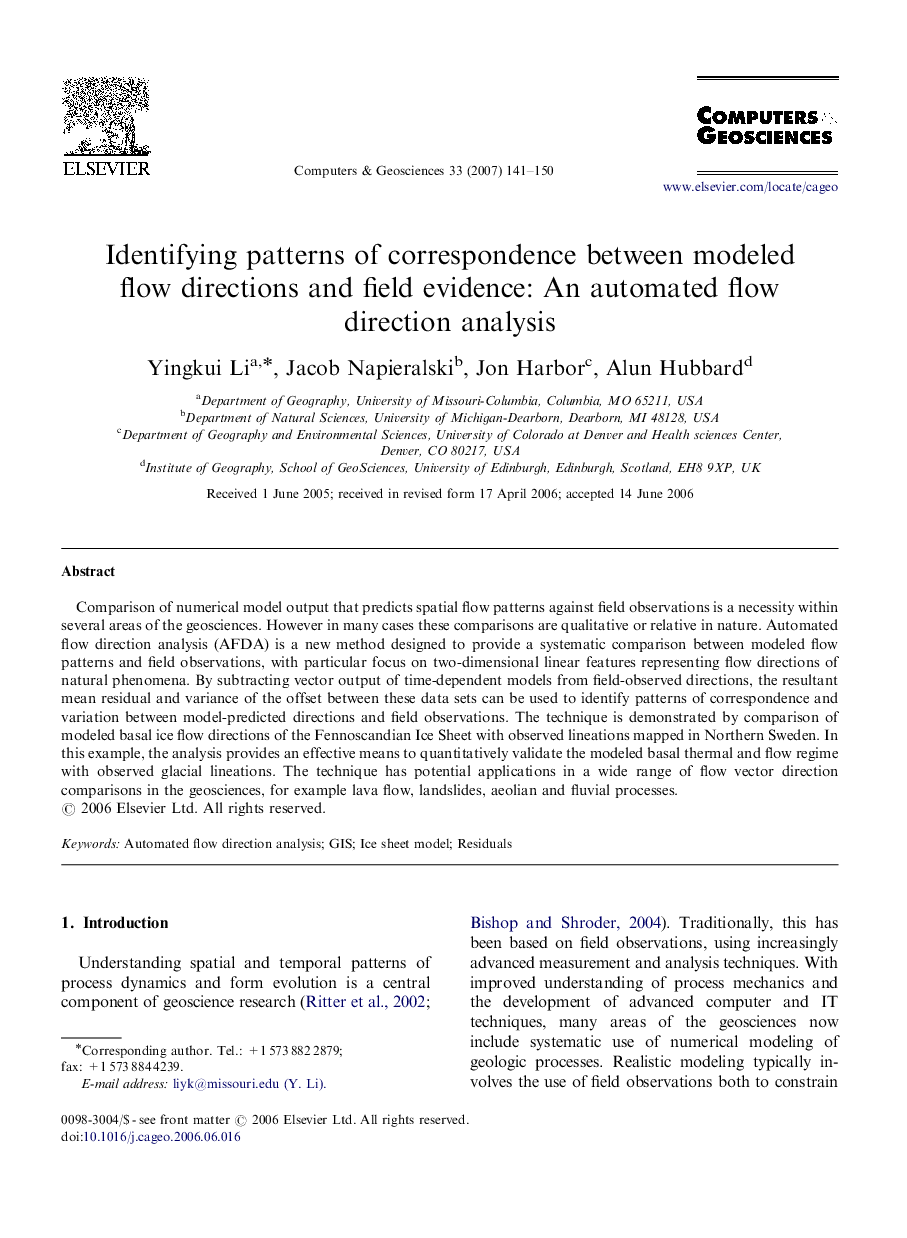| Article ID | Journal | Published Year | Pages | File Type |
|---|---|---|---|---|
| 508458 | Computers & Geosciences | 2007 | 10 Pages |
Comparison of numerical model output that predicts spatial flow patterns against field observations is a necessity within several areas of the geosciences. However in many cases these comparisons are qualitative or relative in nature. Automated flow direction analysis (AFDA) is a new method designed to provide a systematic comparison between modeled flow patterns and field observations, with particular focus on two-dimensional linear features representing flow directions of natural phenomena. By subtracting vector output of time-dependent models from field-observed directions, the resultant mean residual and variance of the offset between these data sets can be used to identify patterns of correspondence and variation between model-predicted directions and field observations. The technique is demonstrated by comparison of modeled basal ice flow directions of the Fennoscandian Ice Sheet with observed lineations mapped in Northern Sweden. In this example, the analysis provides an effective means to quantitatively validate the modeled basal thermal and flow regime with observed glacial lineations. The technique has potential applications in a wide range of flow vector direction comparisons in the geosciences, for example lava flow, landslides, aeolian and fluvial processes.
